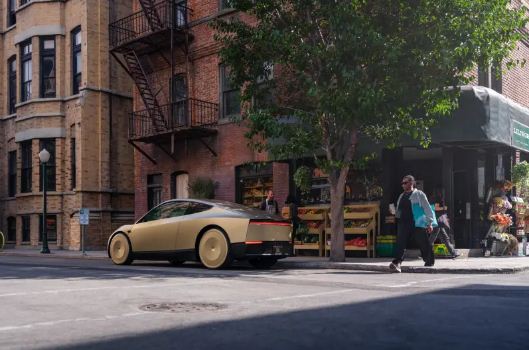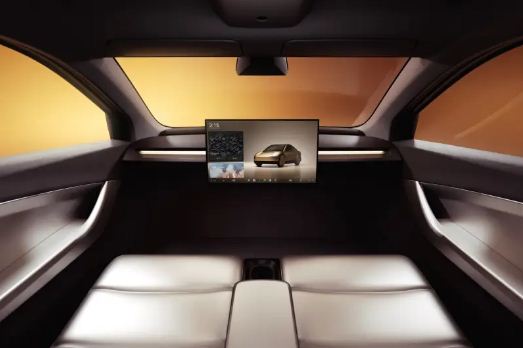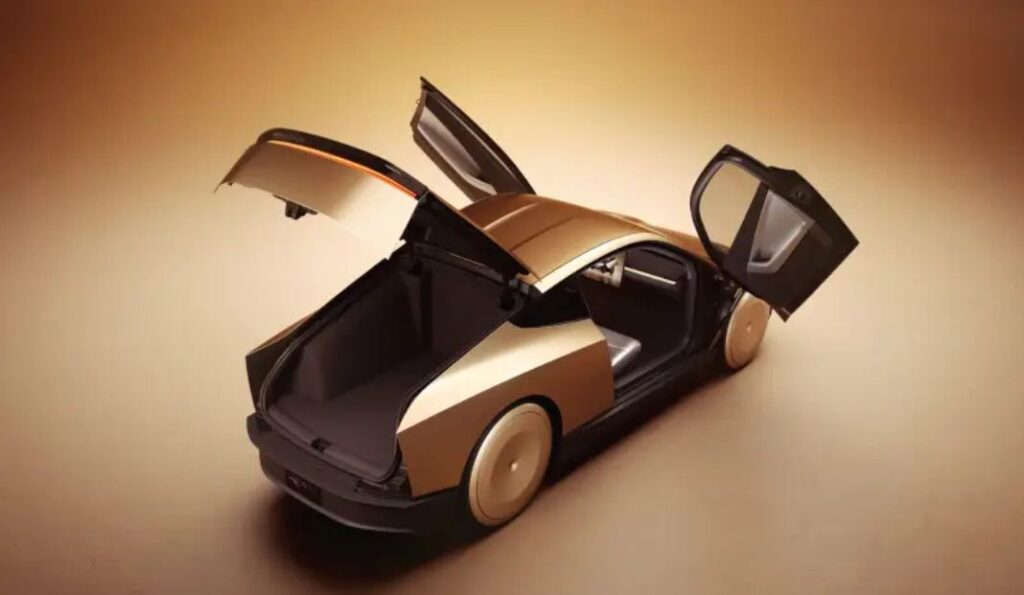The event took longer than expected to start. But once it began, Elon took just a few seconds to reveal his new flagship product: the Tesla Cybercab. As rumors suggested, it is a fully autonomous car that has no pedals or steering wheel and can take a person from one location to another without any human help.
Please follow us on Facebook and Twitter.
On the outside, the Cybercab combines the look of the Cybertruck, Tesla’s most radical vehicle, with the design of the Model 3 Highland. In the videos shown by the company, several interesting details are visible, such as two unique scissor-shaped doors (similar to those found on sports cars), fully covered rims to improve aerodynamics, and a completely opaque rear window.
As for the interior, Tesla has shown several images featuring only two seats and a dashboard free of controls. In other words, there are no steering wheel or pedals. The only element that adds to the interior is a large central screen, which allows users to interact with the car or, if the passenger prefers, enjoy multimedia content while traveling.
The Tesla Cybercab has no pedals or steering wheel, will cost less than $30,000, and is set to be released before 2027.

For autonomous driving, Tesla relies solely on cameras and artificial intelligence algorithms. This is a different approach from rival companies like Waymo, which use advanced sensors such as LiDAR. This decision is not surprising, as Tesla chose years ago to forgo these types of elements in its other cars. Since then, the company has adapted and trained its autonomous driving algorithms to operate without them.
An interesting new feature of the Tesla Cybercab is that it does not have a charging port. Elon Musk has confirmed that this vehicle will only support wireless charging, although he has not provided details about the technology that will make this possible.

Elon Musk has assured that the Tesla Cybercab will cost less than $30,000, making it even cheaper than the current Tesla Model 3 Highland. As for when it will go on sale, the CEO has stated that it will be available before 2027.
However, these predictions should be taken with caution. Elon Musk’s history shows a tendency to be overly optimistic. The most notable example is autonomous driving, a capability he has promised for years. Despite clear advances, it is still not where expected. Similarly, vehicles like the Cybertruck and the Roadster 2 have faced multiple delays compared to their original announcements.

A Brief but Promising Announcement
The launch event for the Tesla Cybercab was different from previous events by the brand, which usually included many technical details. This time, Tesla simply showcased its vision, revealing the vehicle’s design for the first time and providing an estimated launch date and price range without going into further details.
The concept, based on the information the brand has shared, certainly has the potential to transform the transportation industry, which is already changing due to electrification. This could place Tesla far ahead of other car brands. However, two big questions surround this product.
First, given its history of missed deadlines, can Tesla launch the Cybercab on schedule—under $30,000, before 2027, and with the expected autonomous driving capabilities? Second, there’s the regulatory issue. A self-driving car without a steering wheel or pedals falls outside the current regulations. Even if Tesla can have this product ready before 2027, will regulatory bodies be prepared by then? This is especially important in regions with stricter regulations, like Europe.
Conditions aside, the plan is certainly ambitious. As Musk explained, cars are stationary most of the time. However, this service aims to increase their usage time—either for the owner or for others. The executive has previously mentioned the idea that any Tesla could serve as an autonomous taxi for others when not in use, allowing the owner to earn some money in return. This concept makes even more sense with the Cybercab.
Regarding cost, Musk stated during the presentation that the expected price is $0.20 per mile, which is about €0.11 per kilometer. This rate is significantly lower than that of a conventional taxi in cities like Madrid.






